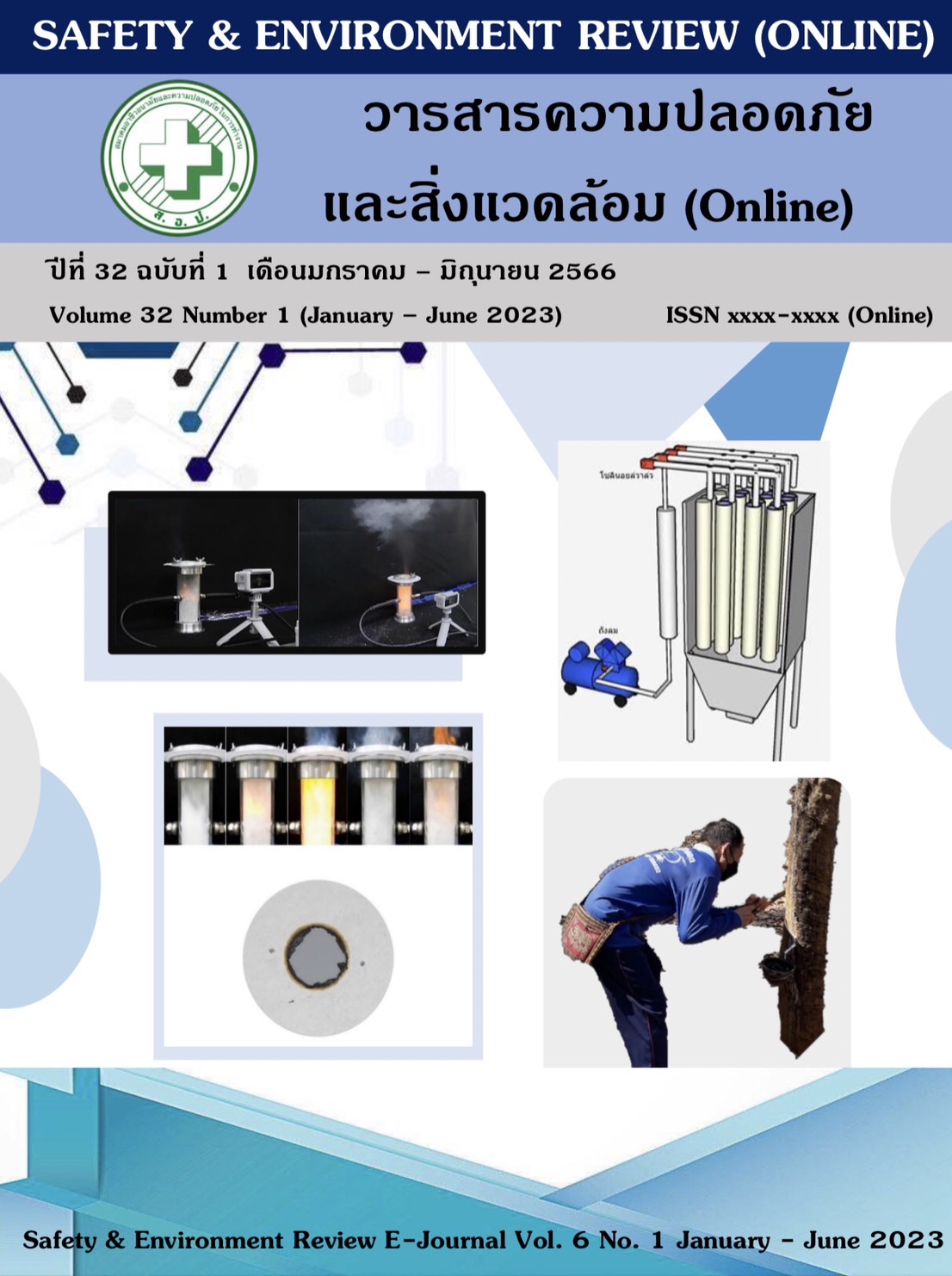OPTIMAL CONDITION FOR FABRIC FILTER CLEANING WITH IMPULSE JET
Abstract
The research presents the experimental study on a created pulsejet cleaning bag intended for a fabric filter in order to compare its efficiency to a polyester filter and a linen filter. The tests were conducted by filling 20 kilograms of sawdust particles into the fabric filter which were washed using varying pressures ranging from 60-100 Psi and the pressure drops of the fabric filter at the inlet and outlet were measured and compared. The results of the experiment revealed that the cleaning efficiency of the pulsejet fabric filter with a polyester bag should apply at the pressure level of 70 Psi and the one with a linen bag should apply at the same pressure level (70 Psi). This impulse pressure was the result when the pressures dropped to minimums of 3.9 mmH2O (-0.415dB) and 5.35 mmH2O (-0.5659dB), respectively. It was also found that the cloth-type filter had cleaning efficiency as the pulsejet type with no significant difference (p-value>0.05). Overall results concluded that the pulsejet performed effectively and was suitable for industrial use.
References
เอกสารอ้างอิง
(1) Lee W, Lee JG, Yoon JH, Lee JH (2020) Relationship between occupational dust exposure levels and mental health symptoms among Korean workers. PLOS ONE 15(2): e0228853. https://doi.org/10.1371/journal.pone.0228853
(2) He W, Jin N, Deng H, Zhao Q, Yuan F, Chen F, et al. Workers’ Occupational Dust Exposure and Pulmonary Function Assessment: Cross-Sectional Study in China. International Journal of Environmental Research and Public Health [Internet] 2022;19(17):11065. Available from: http://dx.doi.org/10.3390/ijerph191711065
(3) Duarte J, Castelo Branco J, Rodrigues F, Vaz M, Santos Baptista J. Occupational Exposure to Mineral Dust in Mining and Earthmoving Works: A Scoping Review. Safety [Internet] 2022;8(1):9. Available from: http://dx.doi.org/10.3390/safety
(4) Phanprasit W. Industrial Hygiene; Strategy, Evaluation, Controlling and Management. 2nd Ed. Bangkok: Best graphic interprint; 2017.
(5) Kenneth C. Air Pollution Control Equipment Selection Guide. New York: Lewis Publishers; 2002.
(6) EMIS. Fabric filter [internet]. [Cited 2023 Feb 1]. Available from: https://emis.vito.be/en/bat/tools-overview/sheets/fabric-filter
(7) Jun Ju, Min-Sen Chiu & Chi Tien. A Model for Pulse Jet Fabric Filters. Journal of the Air & Waste Management Association, 2000; Vol.50;4, 600-612. DOI: 10.1080/10473289.2000.10464030
(8) Andersen BO., Nielsen NF., Walther JH.. Numerical and experimental study of pulse-jet cleaning in fabric filters. Powder Technology, 2016; Vol. 291, 284–298
(9) Zhang M, Qin W, Ma X, Liu A, Yan C, Li P, et al. An Environmentally Friendly Technology of Metal Fiber Bag Filter to Purify Dust-Laden Airflow. Atmosphere [Internet] 2022;13(3):485. Available from: http://dx.doi.org/10.3390/atmos13030485
(10) H. Mitsuhiko, C. Kanaoka, M. Furuuchi, T. Inagaki, Analysis of Pulse-jet Cleaning of Dust Cake from Ceramic Filter Element. 5th Int. Symp. on Gas Cleaning at High Temperatures; Sep 19, 2002. National Energy Technology Laboratory, South Park Township, PA, USA. 2002
(11) Kim E, Byun Y, Bak H-S, Koh D-J. Experimental Study on the Operating Parameters of a Pulse-Jet Filter Bag Cleaning System. Sustainability [Internet] 2022;14(12):7276. Available from: http://dx.doi.org/10.3390/su14127276
(12) C. Wassgren. Flow through Converging-Diverging Nozzles. In: Ch.13 of Notes on Thermodynamics, Fluid Mechanics and Gas Dynamics; 2021. p.1361-1404.
Downloads
Published
Issue
Section
License
Copyright (c) 2023 SAFETY & ENVIRONMENT REVIEW

This work is licensed under a Creative Commons Attribution-NonCommercial-NoDerivatives 4.0 International License.
This article is published under a Creative Commons Attribution-NonCommercial-NoDerivatives 4.0 International License (CC BY-NC-ND 4.0), which allows others to share the article with proper attribution to the authors and prohibits commercial use or modification. For any other reuse or republication, permission from the journal and the authors is required.



